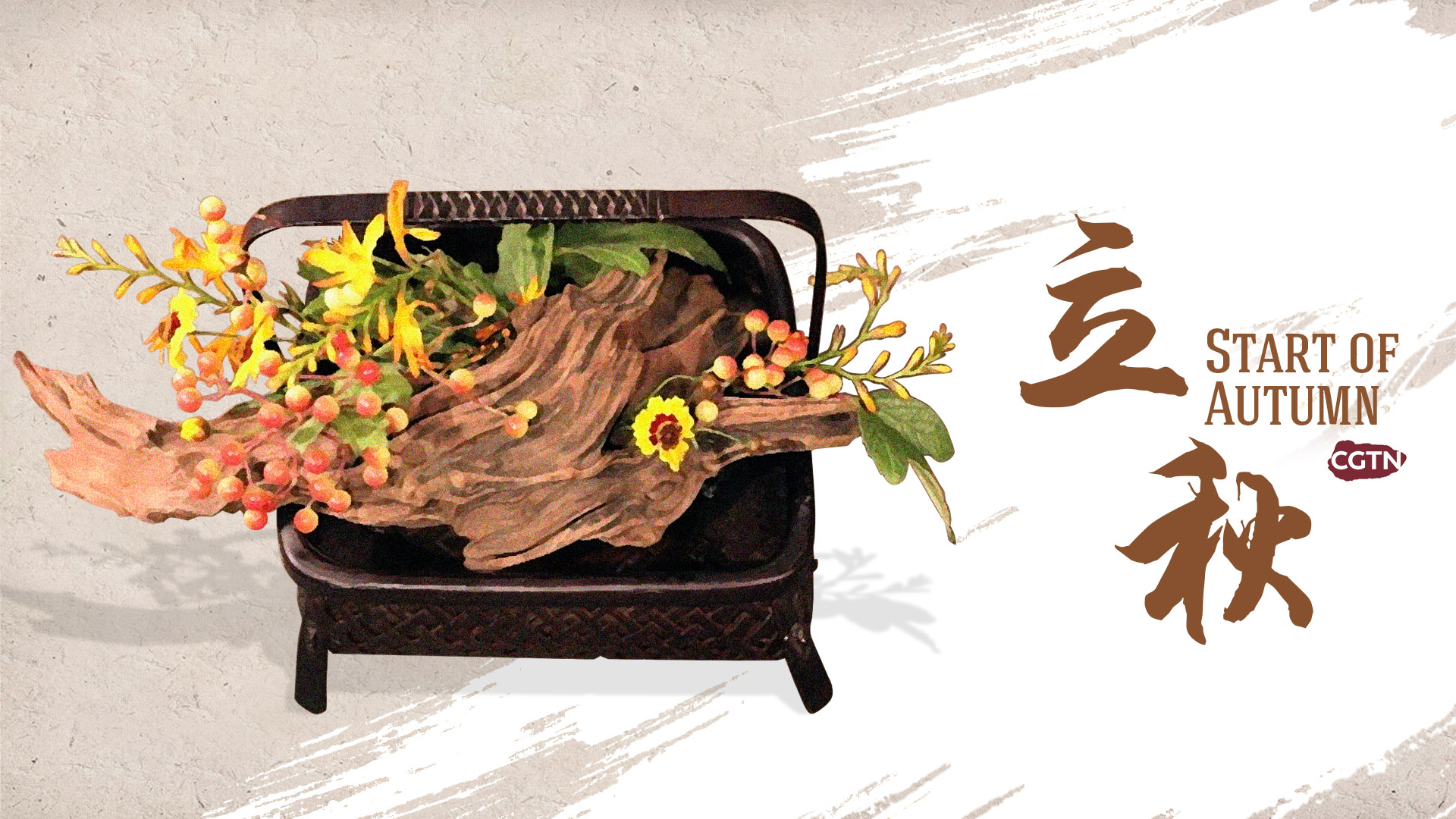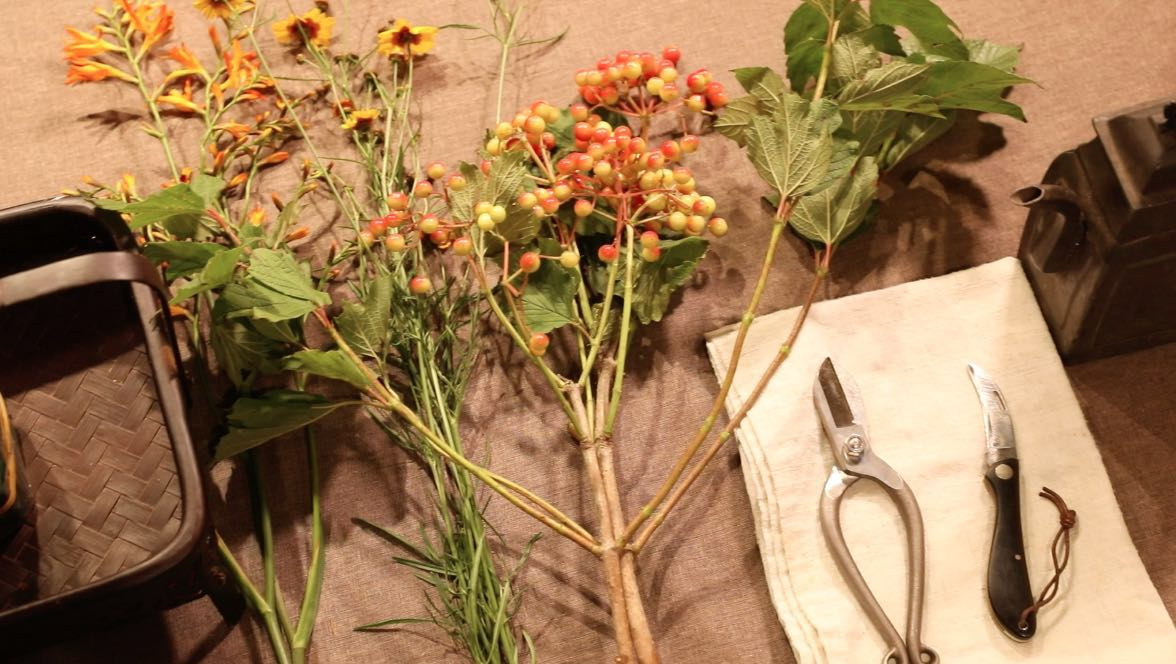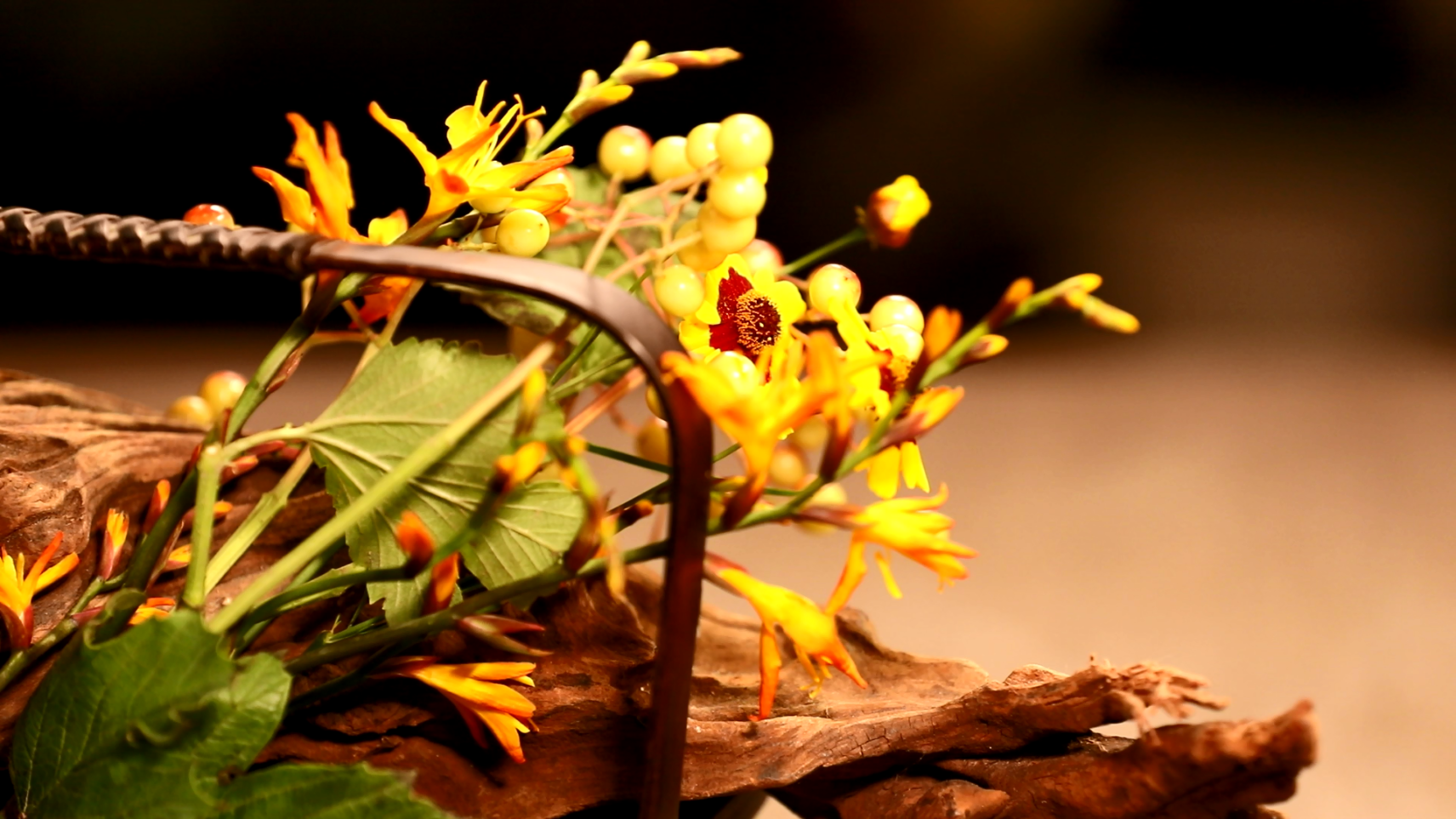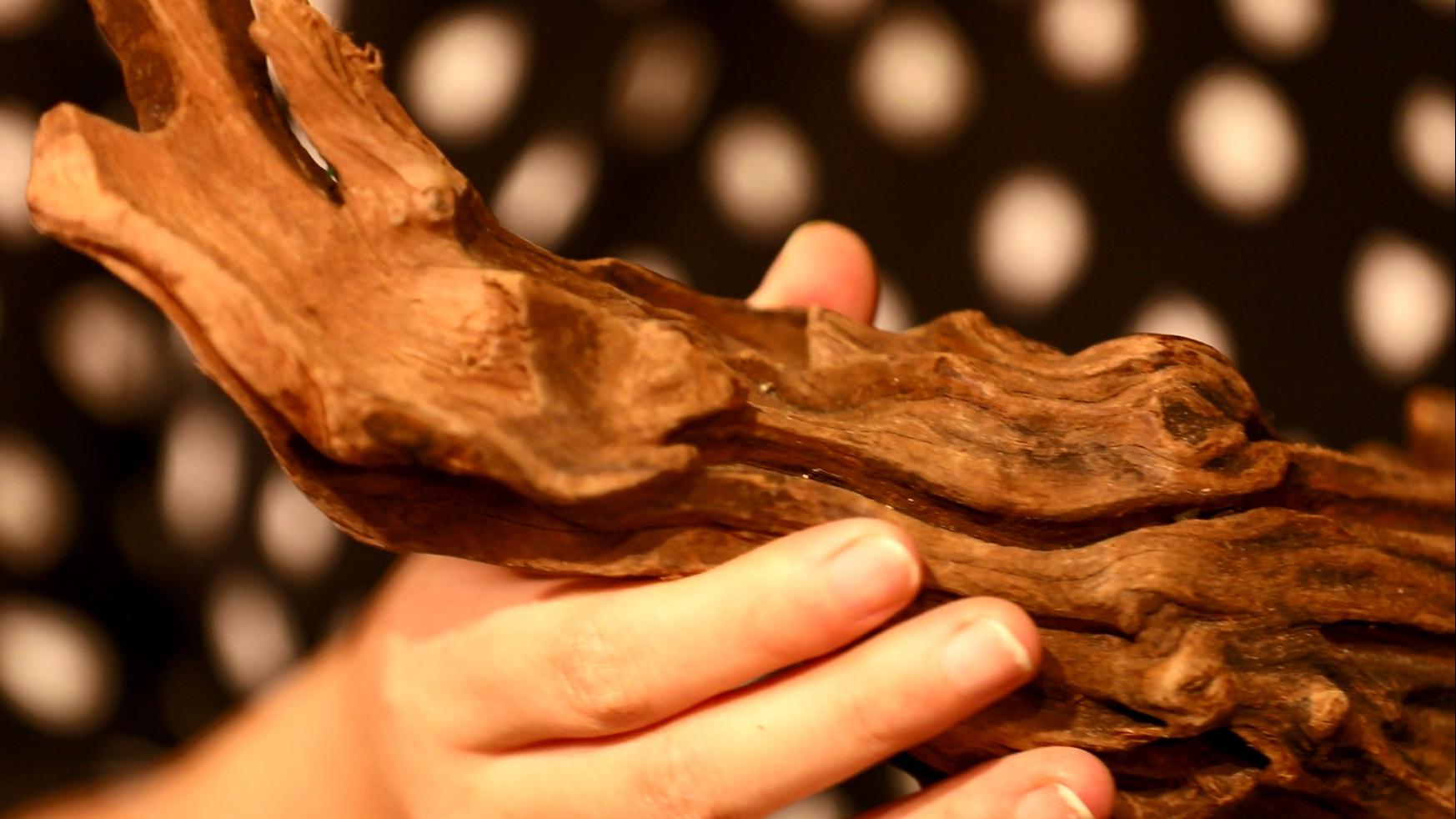03:05

Liqiu, also known as the start of autumn, falls on August 8, Beijing time, this year, according to the Chinese astronomical calendar. It is the 13th solar term in a total of 24.
It is the beginning of CGTN's new series on the 24 solar terms, where we introduce one Oriental style flower art in each episode.
Audiences have followed CGTN's solar term series for more than three years. Last year, the Start of Autumn marked the beginning of CGTN's solar term food series available on our website.
As a national intangible cultural heritage, traditional Chinese flower arrangement is the origin of the oriental flower management art, popular during the Northern and Southern Dynasties (420-581) and flourished during the Sui and Tang dynasties (581-907), Sina reported. Flower art in Chinese Buddhist etiquette is the initial research object of Japanese flower art. Later, in addition to religious activities, this form of art started to develop and became more common in all social levels.

Necessary materials for a Start-of-Autumn theme flower artwork. /CGTN Photo
Necessary materials for a Start-of-Autumn theme flower artwork. /CGTN Photo
The 24 solar terms are also intangible cultural heritage, containing rich cultural connotations, including songs and legends, traditional production tools, handicrafts, calligraphy, and painting, as well as Chinese flower culture.
The Start of Autumn means that the summer heatwave is fading, heralding in a cool early autumn. Here we present a lot of flowers with little fruits in full bloom, such as the linden arrowwood and creeping zinnia in the video.
"The flower art in autumn should use yellow leaves, fruits, and other flower materials to transmit these autumn feelings. The linden arrowwood has an overall yellow color, but as autumn begins, the fruit starts to turn a little red, so I chose this flower," said Cherry Ran, a flower designer.

The finished flower artwork. /CGTN Photo
The finished flower artwork. /CGTN Photo
The Start of Autumn solar terms is at the intersection of summer and autumn. So, creeping zinnia is also a good choice for this flower artwork, and besides, these flowers are available from summer to autumn, Ran added. "These little flowers are adorable: They are orange and have a small coffee color in the middle. This kind of flower also has a summer feel with a little touch of autumn."
Besides the seasonal flowers, the designer decided to use a bamboo basket. Since bamboo is used to display the wild and natural characteristics of flowers, the designer said the basket makes a perfect match for the flowers and the background of the season.

Sichuan thuja is a decorative element in this work. /CGTN Photo
Sichuan thuja is a decorative element in this work. /CGTN Photo
Traditional Chinese flower arrangement features the expression of the artistic concept. The artist pursues the natural beauty of the flowers and the spirit of the artistic concept, said Sina. Therefore, the flower designer chose a dried Sichuan thuja tree branch as a decorative element to give the feeling of wildflowers blooming in the mountains in the early autumn.
Flower art originates from China's earliest aesthetic consciousness of landscape and is also a unique natural philosophical concept of the Orient. It is a custom of ancient Chinese people to choose flowers for the arrangement according to the season.
Stay tunned with CGTN, and follow the new journey of the Oriental flower art and solar terms.
Editor: Ye Qing
Copy editor: Liane Ferreir
Chief editor: Wang Dongmei
Videographer: Zhang Jiahua
Video editor: Ge Ning
Cover image: Yu Peng
Executive producer: Zhang Xiaohe
Producer: Si Nan
Supervisor: Zhang Shilei